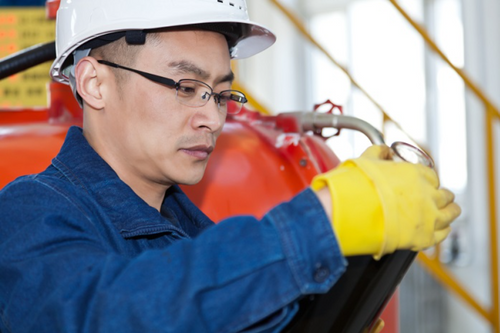H2S Monitor Bump Test: How Often Should My H2S Monitor Be Bump Tested?
A customer from the Chinese division of a large petroleum company emailed us this week to ask how often their BW Clip H2S Monitors should be bump tested. Since we sell more of these monitors than any other at PK Safety Supply, it would seem logical that we'd have a ready answer. But we don't.
It's not because we don't care, or we don't think it's important. It is. Here's the situation: Officially, the manufacturer BW Honeywell recommends periodically testing the response of the hydrogen sulfide sensor to gas by exposing the detector to a target gas concentration that exceeds the low alarm setpoint - in other words bump testing. Exposing the monitors to their target gas allows users to verify the audible and visual alarms are activated.
The problems is BW doesn't spell out how often "periodically" is. The manufacturer seems to equivocate on their claim the monitors are “zero maintenance” and "operate for the full two years without calibration" with this call for periodic bump testing. We understand calibration is not bump testing. But either one is certainly maintenance.
In response to this overwhelming lack of direction many companies have developed their own intervals for testing based on their own frequency of use and the concentrations their monitors are exposed to. However, these self-imposed intervals vary even within the same industry. Is the interval monthly (as we learned was the standard interval for the Chinese refinery)? Is it every time a monitor is used (which is what we've heard is the interval for the Bay Area Chevron Richmond Refinery)? We couldn't say.
We do know that in practice many companies never bump test these monitors. Smaller companies are using the BW GA24XT-H because they are one of the least expensive options, and they're trying to meet OSHA regulations. Unless the 24 month countdown has expired, these folks simply figure the monitors are working properly.
For companies looking for concrete evidence from the manufacturer to back up their choices for "periodic" bump testing routines, you're going to be disappointed. Yes, I realize that you've read this far, and I'm still disappointing you. I'm sorry. The safest option is the most labor- and capital-intensive - monitors should be bump tested each time before they are used in the field. It's the only way to know for sure they are responding properly to the target gas.
If I could make this easier, I would. Oh wait, I can. The BW MicroDock II Docking Station works with the GasAlert Extreme monitors. If you have to bump test, at least it's automated. If we can deliver other circular, unsatisfying answers, please let us know. We're happy to help.
Related Searches
Gas Monitor Calibration Log, Pk Safety 4 Gas Bump Alarm Test Gas, Pk Safety H2S Bump Alarm Test Gas, Pk Safety Co Bump Alarm Test Gas
Recent Posts
-
April 28 is Workers Memorial Day
Your job shouldn't cost your life, but for some, this has unfortunately been the case. Wo …Apr 26th 2024 -
Promoting Safety: National Work Zone Awareness Week is April 15-19, 2024
Each year, the National Work Zone Awareness Week (NWZAW) places the spotlight on the importance o …Apr 11th 2024 -
Understanding 4 Gas Monitors: How They Work & Why They Are Important
In today’s increasingly dynamic industrial landscape, 4 gas monitors have emerged as critical com …Apr 8th 2024





